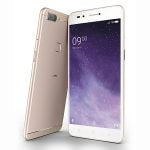Taking a look back at seven days of news and headlines across the world of Android, this week’s Android Circuit includes Google’s new Pixel 2 and Pixel 2 XL smartphones, why one camera lens for the Pixel family is enough, what Google’s smartphones stand for, the availability of Samsung’s Galaxy X, Android Oreo’s market share, Nokia’s Android P updates, leaked details of Huawei’s Mate 10, and Microsoft’s Android launcher.
Android Circuit is here to remind you of a few of the many things that have happened around Android in the last week (and you can find the weekly Apple news digest here).
Google’s Big Day Reveals New Pixel Hardware
Google held an Android-focused event this week that saw the reveal of the Pixel 2 and Pixel 2 XL handsets, along with a new Pixel branded chromebook, a new Google Home speaker and an update to its VR helmet. Forbes Miguel Heft has the details, including the aforementioned high-end thirteen-inch PixelBook:
Thin, convertible into tablet mode, 16GB RAM and 10 hours of battery life. If there is no wifi, it instantly tethers through your phone. Google Assistant comes built-in. It comes with a pen/stylus — circle a photo of an artist, and the Google Assistant will tell you who it is. Google Play smartphone apps run on the Pixelbook. Snap is working with Google to bring a “large screen” experience to the Pixelbook. Here’s the catch. It’s not cheap. Available in 3 configurations, starting at $999, with the pen for an extra $99. Available in the US, Canada and the UK. Pre-orders start today and in stores on Halloween.
More details from the launch event here on Forbes.

A member of the media holds up the ‘barely blue’ color model of the Pixel 2 smartphone at a product launch event, October 4, 2017 (Photo: Elijah Nouvelage/AFP/Getty Images)
Pixel 2 Is Missing A Lens?
Much of the attention on the Pixel 2 and Pixel 2 XL handsets will focus on some missing hardware, as it only has a single-lens rear camera. Google’s decision to not follow the trend of dual-lens cameras on the rear looks like a missed opportunity on paper, but the real measure is in the quality of the pictures taken. Paul Monckton looks at the first test results from the popular DxOMark’s camera benchmark:
With an overall score of 98 points, the Google Pixel 2 stands a full four points clear of the iPhone 8 Plus and Galaxy Note 8, now tied for second place. We were always expecting strong camera performance from Google, especially given the stunning results from the original Pixel, but its results are especially impressive given that it manages to do with a single camera what competitors can only do with two.
More on the Pixel 2 optics and why they are so strong can be found here.
What Is The Pixel 2 Good For?
Having the Pixel range of smartphones allows Google a direct line to consumers and is a strong statement of purpose. By having its own hardware on sale Google can show vision, application, and hunger. Paul Miller has a fascinating editorial on what the Pixel 2 and Pixel 2 XL say to him about Google’s ambitions to beat Apple:
Many of the things that make Android appealing right now aren’t new to Android users, but as an Apple user who has trusted deeply in one company to manage a large portion of my digital life for me, it’s much more appealing to see Google offer an alternative to the iPhone than another hardware player like Samsung or LG. Google, now more than ever, has a clear vision for what phones should be like, how they should be used, and how they should integrate with Google services. I already use Google’s Inbox, YouTube, and Docs on my iPhone all the time. Now that Google’s hardware looks mature and in sync with its services, it’s finally made me take Android seriously in a way I never have before.
More at The Verge.











